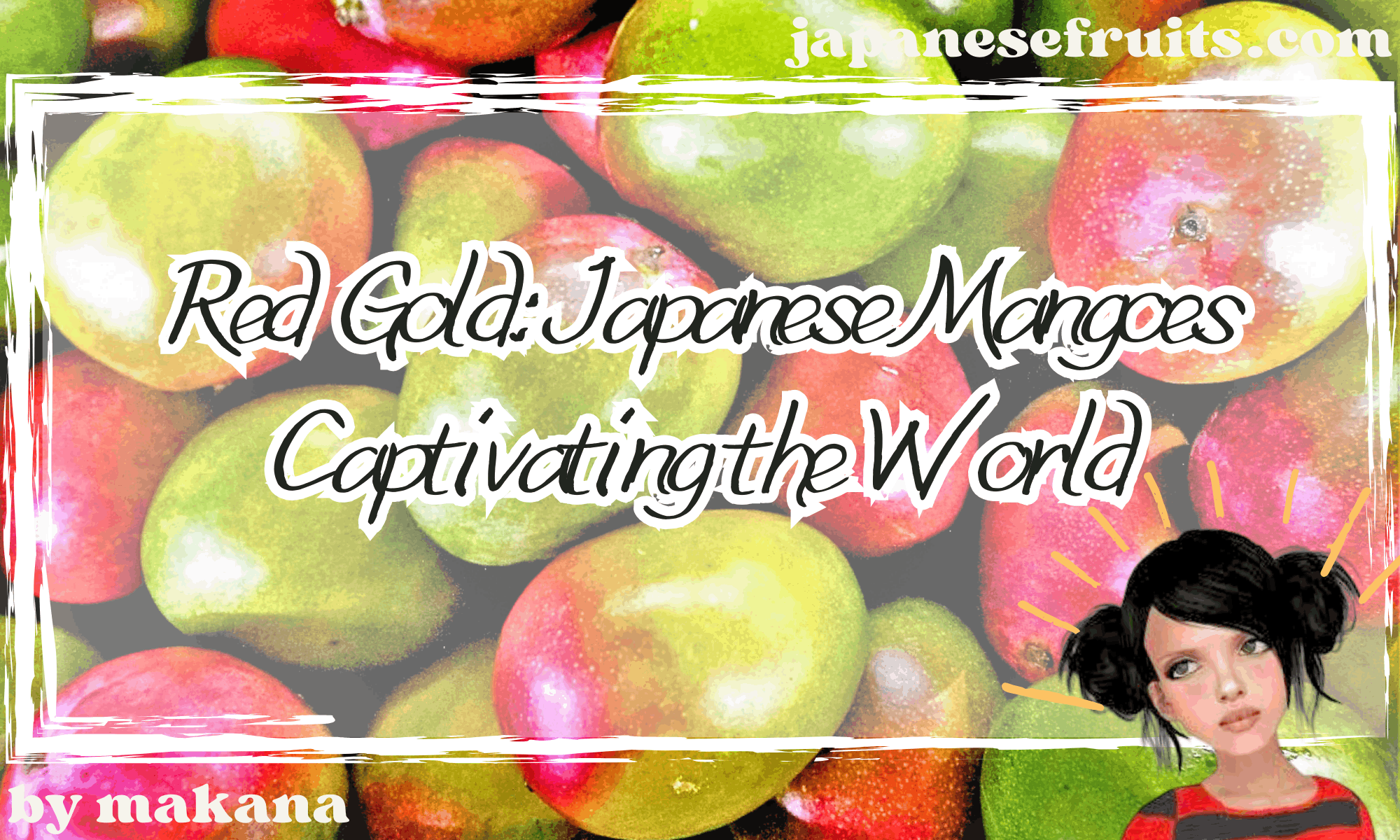Hello everyone! This is Makana, your fruit blogger. Have you noticed the recent buzz on social media and TV? It’s all about mangoes grown in Japan’s southern regions: Okinawa, Miyazaki, and Kagoshima. Particularly, Miyazaki’s “Taiyo no Tamago” (Egg of the Sun) has been making headlines and attracting significant attention.
Interestingly, Japanese mangoes originated from varieties that traveled from America through Taiwan. Now, thanks to Japan’s mild climate and the meticulous cultivation by local farmers, they’ve evolved into a fruit that Japan can proudly showcase to the world.
Today, I’d like to share my research on Japanese mangoes, covering varieties, production regions, and their global reputation. Whether you’re already a mango enthusiast or just starting to explore this fruit, I hope you’ll find this information useful.
Japanese Mango Varieties and Characteristics
The Apple Mango (Irwin variety) dominates Japanese mango cultivation, accounting for about 96.5% of production. Its name comes from its apple-like appearance when it ripens to a bright red color.
Apple Mango (Irwin Variety)
This variety features vibrant orange flesh with a melt-in-your-mouth texture. It’s known for its rich aroma, intense sweetness, and perfect balance of acidity. Fully ripened ones, called “Kanjuku Apple Mango” (Fully Ripened Apple Mango), are said to be even sweeter.
Keitt Mango
Cultivated in Okinawa, this is known as the “phantom mango” due to its rarity. Unlike the Apple Mango, its skin remains green even when ripe. With extremely limited production, it’s scarce in markets year-round. The flesh has minimal fiber, a creamy texture, and boasts a high sugar content comparable to melons.
Other Varieties
While less common, varieties like Kent, Haden, and Tommy Atkins are also cultivated in Japan, albeit in very small quantities.
Major Production Regions and Their Characteristics
Japanese mango cultivation is known as a specialty product of the southern regions, taking advantage of the warm climate. Here are the unique features of each production area:
Okinawa Prefecture
Centered around Miyako Island, which is considered ideal for mango cultivation, Okinawa utilizes its year-round warm climate. The well-draining soil rich in minerals is particularly noted for producing delicious mangoes.
Okinawa is also known for producing Keitt mangoes, which account for about 10% of the prefecture’s total mango production. Due to their rarity, they’re popular items on online shopping sites.
Miyazaki Prefecture
This is the home of the premium “Taiyo no Tamago” mangoes. Only those meeting strict criteria – a sugar content of 15 degrees or higher and weighing at least 350g – can bear this name. The cultivation method focuses on “tree-ripening,” allowing the fruit to fully mature on the tree, resulting in an intensely sweet flavor.
Kagoshima Prefecture
Kagoshima is known for its greenhouse cultivation that takes advantage of the warm climate, producing high-quality mangoes. The “Seito Tiara” variety, in particular, is a premium selection meeting high standards of at least 17 degrees Brix and weighing 460g or more.
Basic Knowledge
Selection and Storage Tips
Ripe mangoes are characterized by their sweet aroma. Nectar seeping through the skin is a sign that it’s ready to eat. For storage, let them ripen at room temperature and chill just before eating.
Nutritional Benefits
Mangoes are rich in vitamins A and C, and dietary fiber, making them beneficial for beauty and health.
Delicious Ways to Enjoy
While delicious on their own, mangoes can also be enjoyed in desserts or smoothies.
Japanese Mangoes: Globally Recognized
Japanese mangoes are highly regarded overseas for their quality. They’re particularly popular as premium fruits in Asian markets like Hong Kong and Singapore.
While the world offers various mango varieties like India’s Alphonso or the Philippines’ Carabao (Pelican Mango), Japanese mangoes stand out for their cultivation methods that prioritize high sugar content and full ripeness.
Conclusion
Japanese mangoes have grown into a globally respected fruit, thanks to the mild climate and the dedicated efforts of local producers. The unique cultivation method focusing on full ripeness has created a distinct value.
Why not try the diverse and flavorful mangoes from different regions of Japan as a seasonal treat? You’re sure to make some new discoveries.
I look forward to continuing to bring you information about Japanese mangoes that are making waves in social media and other media outlets.

Leave a Reply